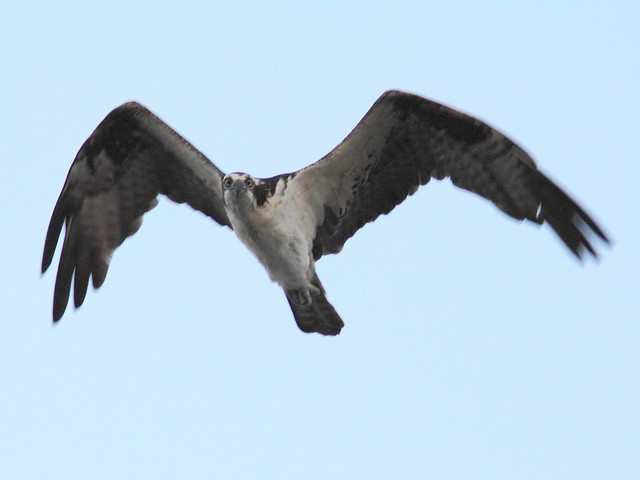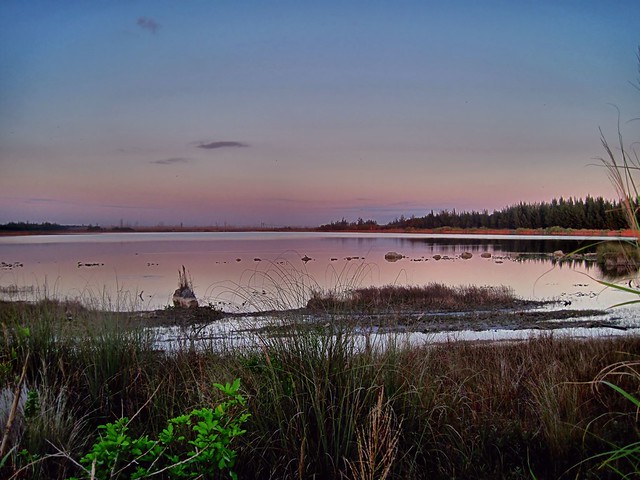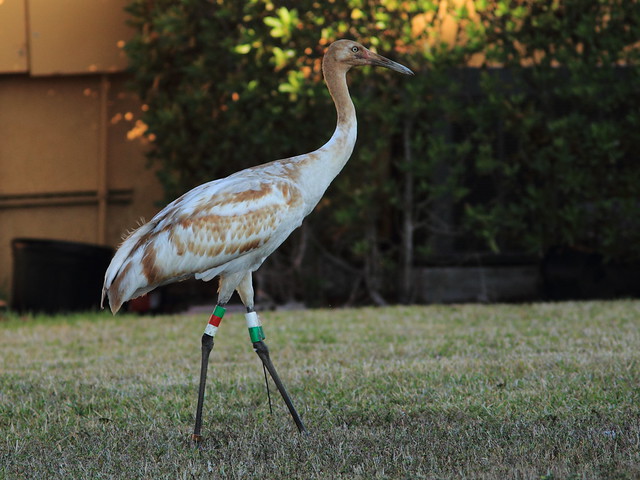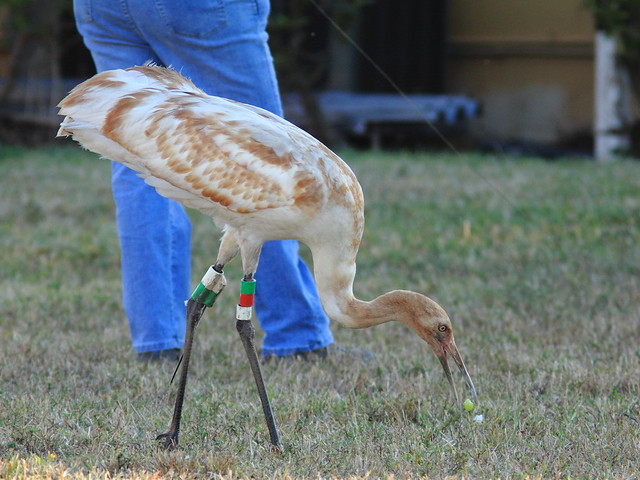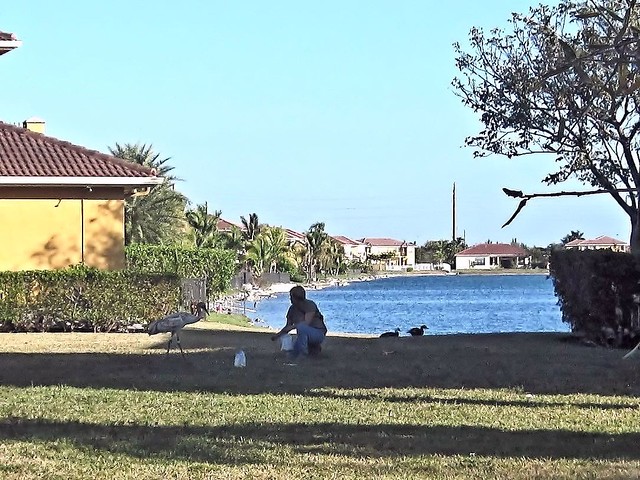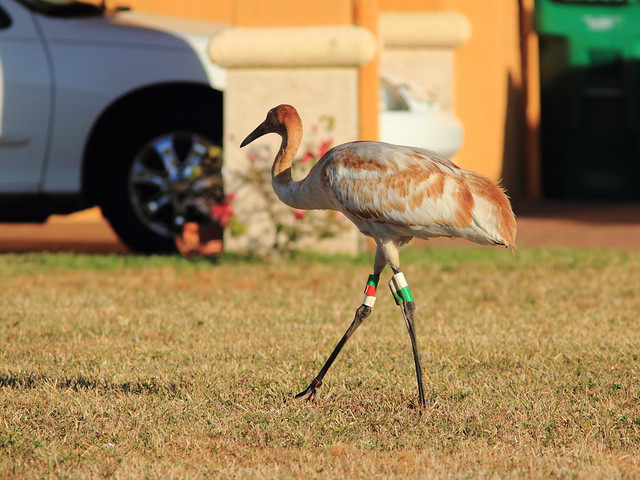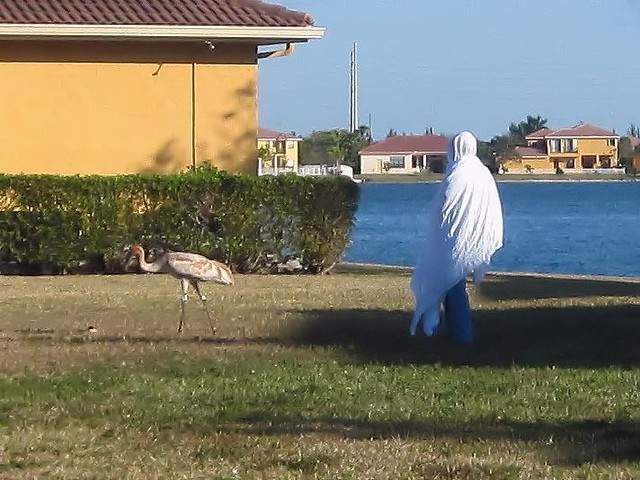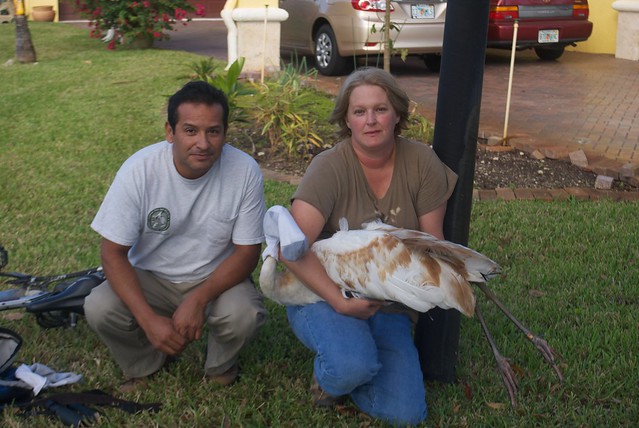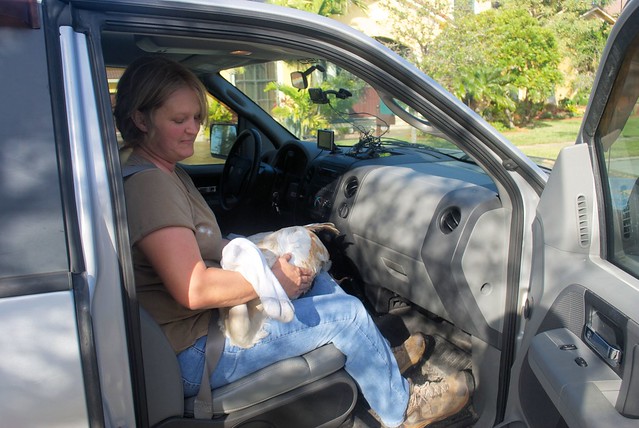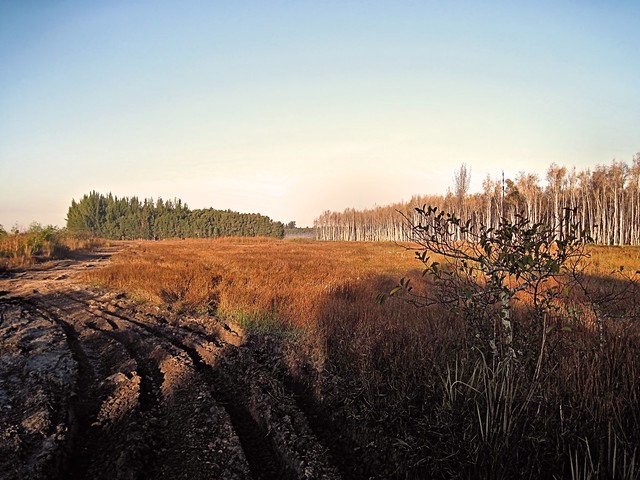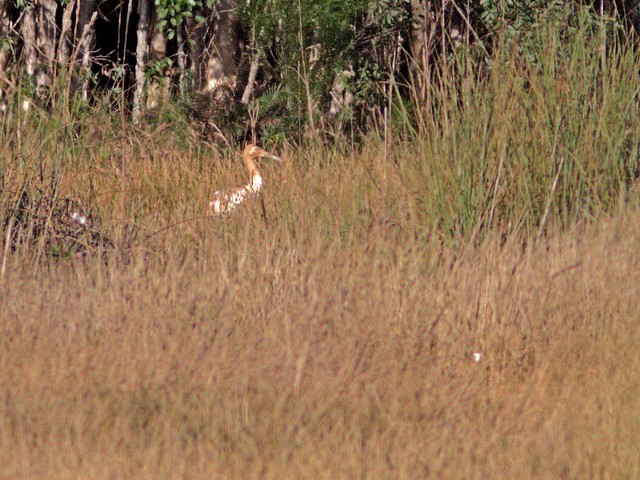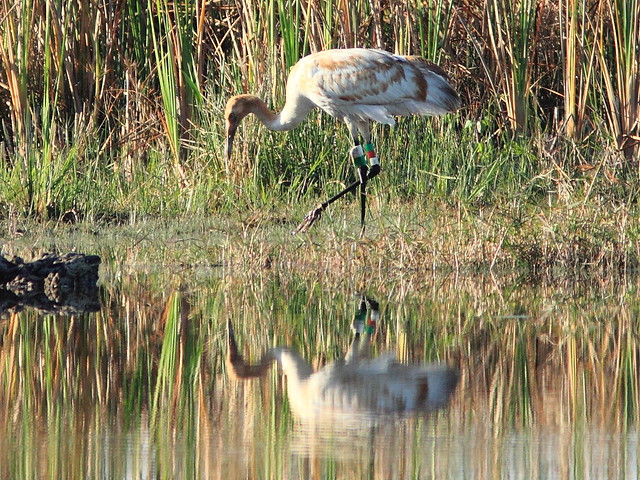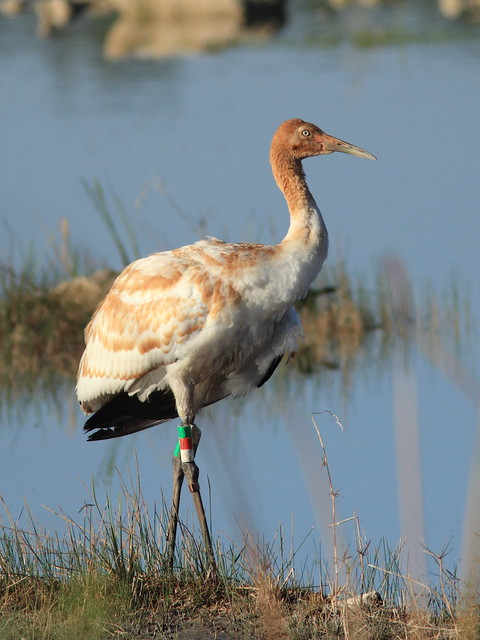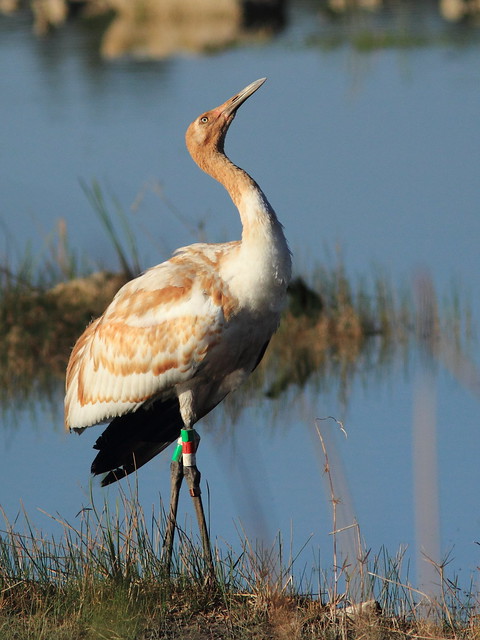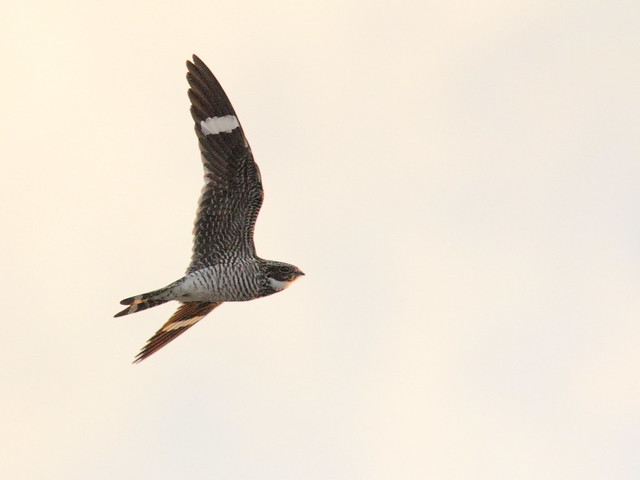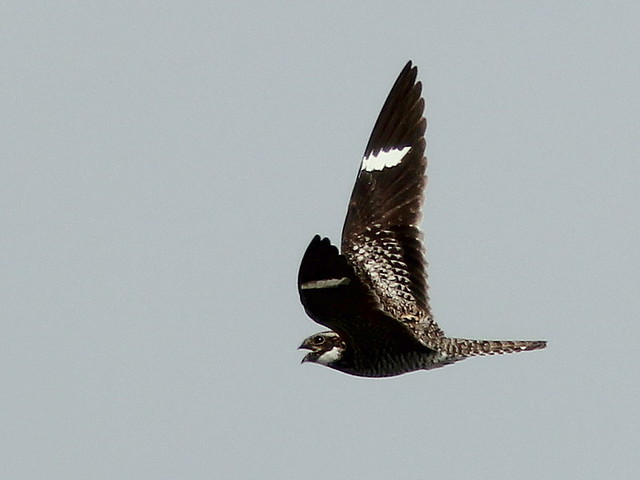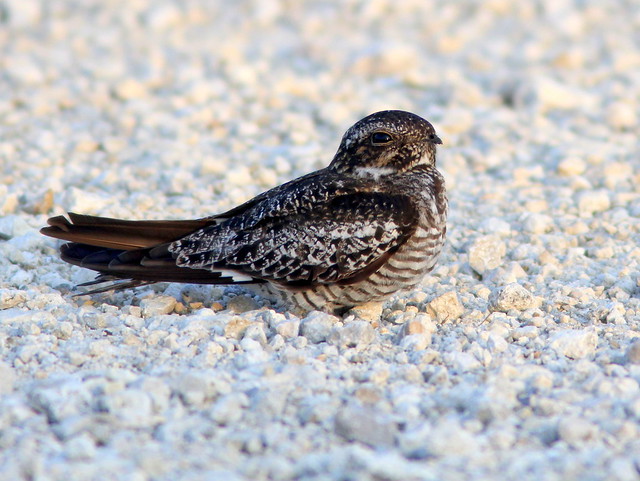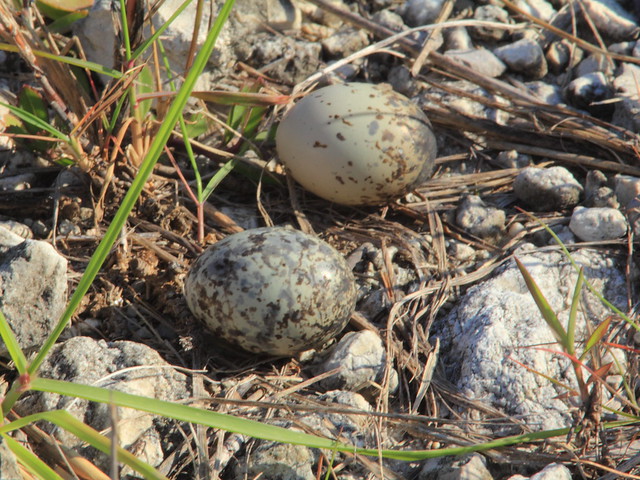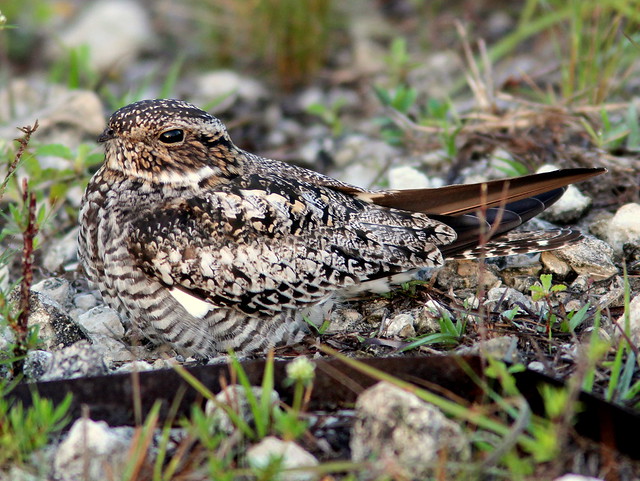In early January, while he was still bedridden, our daughter fell and broke two bones in her lower leg. So far we have spent most of the months of October through February in Illinois, helping them and our two young granddaughters. His parents flew in to assist, and this allowed us to return to Florida for a few weeks to host house guests at Christmas and again in late January. There appears to be light at the end of the tunnel, as this week our daughter was able to bear weight (but not drive for 5 more weeks), and her husband drove to his Chicago office after an absence of over 3 months.
Here in Illinois we have been occupied with domestic tasks-- transporting the girls and the patients to and from school and medical appointments respectively, preparing meals (etc.), and have spent little time afield. I prepared this post in late December, but all of the above, plus the hatching of our local eaglet, my encounter with the snipes, and especially the Whooping Crane excitement caused me to postpone publication.
Their two Tibetan Mastiffs have been good company. Weighing over 100 pounds each, they love the snow and cold.

To top it off, there have been problems with Internet connectivity that had to remain a low priority. Luckily, this post remained in Blogger as an unpublished draft. By now the mockingbirds and cardinals are singing there, so although a bit late, it permits me to keep my commitment to post every week. It describes a mid-winter walk into the recovering Everglades mitigation area adjacent to our home:
We enjoyed another pink dawn before walking out on our local South Florida wetlands patch. This photo was taken about 15 minutes before sunrise on December 12, 2012.

Along the way there was a noticeable lack of bird sounds. Gray Catbirds, mostly out of sight, mewed softly.
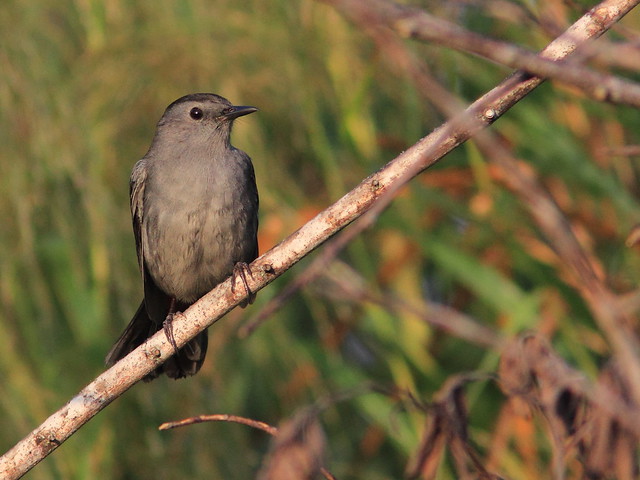
This Blue Jay emitted a remarkable imitation of a Red-shouldered Hawk, then an Osprey call.

From an overhead wire, a people-watching Eastern Phoebe peered down quizzically at a bird-watcher.
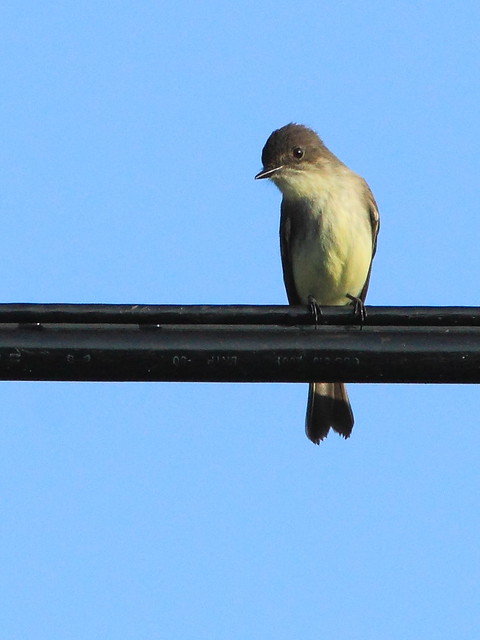
As if to brighten things up, a Common Yellowthroat chattered from the brush, then posed nicely out in the open.
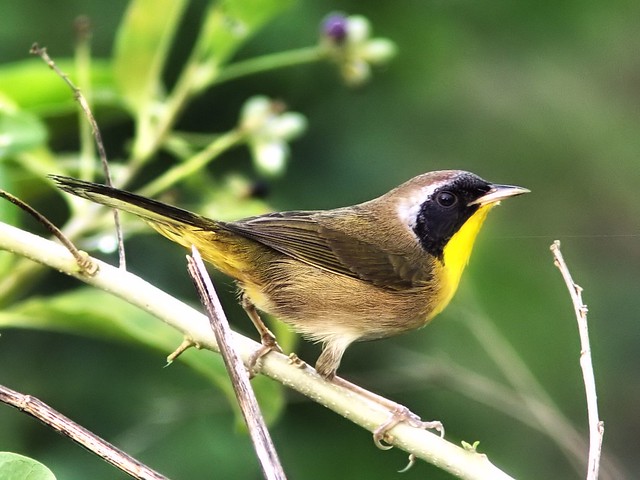
It was an unusually quiet morning for birding, quite a departure from the previous two weeks, when pelicans and spoonbills were present on the wetlands lake. At first it was moderately foggy, causing soft photos. I processed this one of an adult Little Blue Heron in black and white in an attempt to overcome the scattering of light by the atmospheric conditions.

Predictably, American Kestrels have returned to spend the winter here. I witnessed an interesting interaction between two of them. I believe both were males, and they were probably competing for foraging territory. Taken at a distance, my photos are poor.
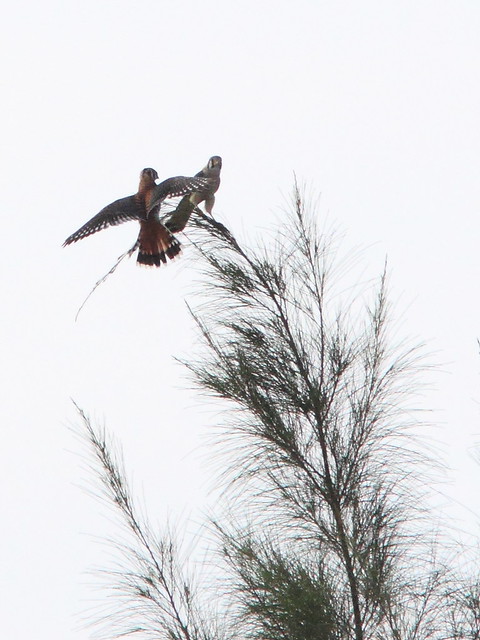
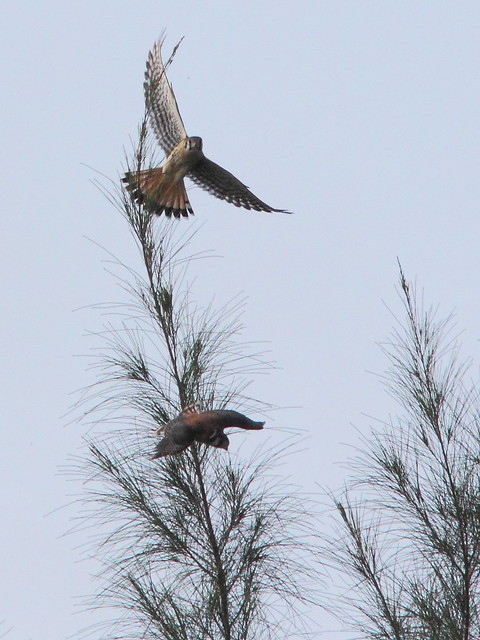
Following the encounter, one of the kestrels flew off, and the "winner" occupied the coveted top of an Australian Pine.

A preoccupied Red-bellied Woodpecker shared a branch just beneath the kestrel.
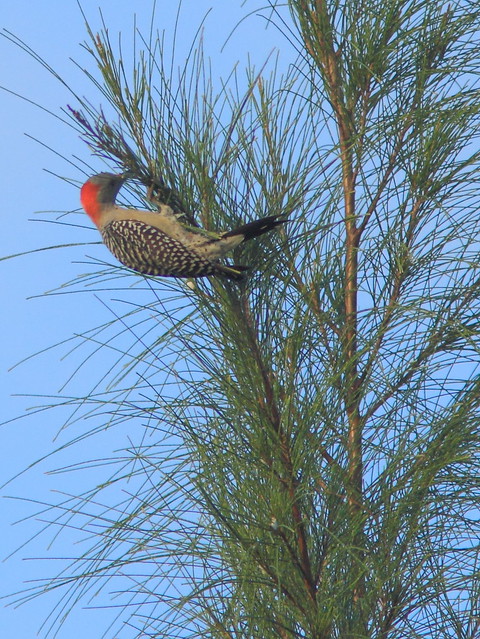
The kestrel then settled on a wire in the abandoned utility easement, joining a Loggerhead Shrike that protested mildly. Coincidentally, the next day the wire, which has hosted scores of my photo subjects since 2004, was taken down by the utility company! (See my story about this wire here)
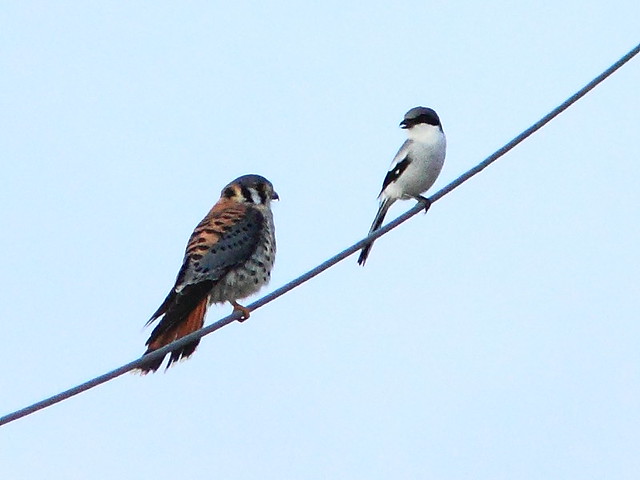
A Great Egret was fishing in a flooded area next to the lake.

An immature Little Blue Heron flew by,
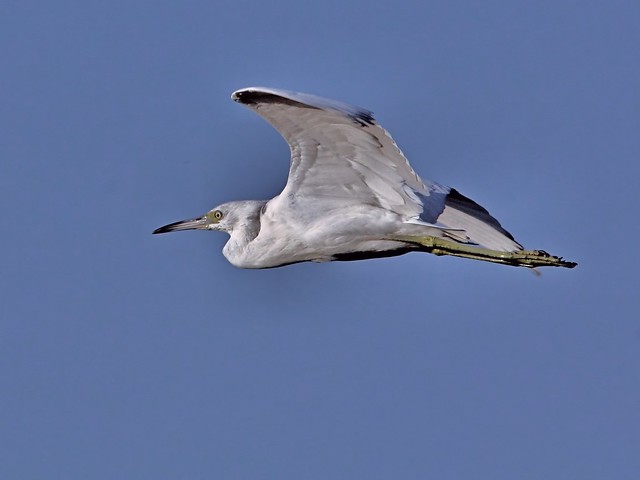
...as did this Ring-billed Gull, carrying something in its mouth.

Pied-billed Grebes were quite vocal, clucking like little chickens.

On our way out, this Northern Mockingbird was reluctant to vacate a post at the entrance to our subdivision.
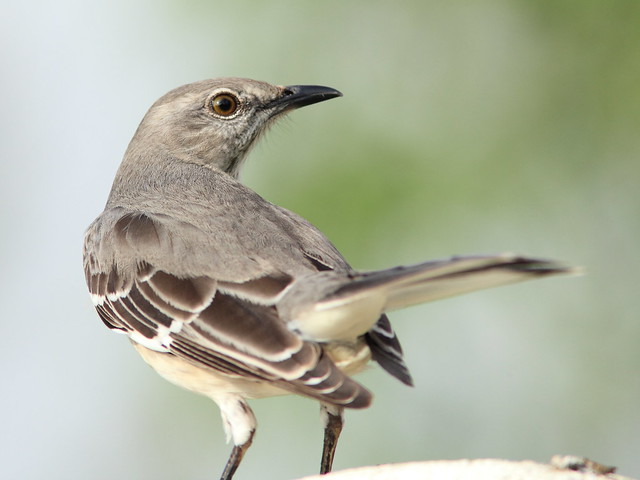
I think I can see my reflection in its eye.
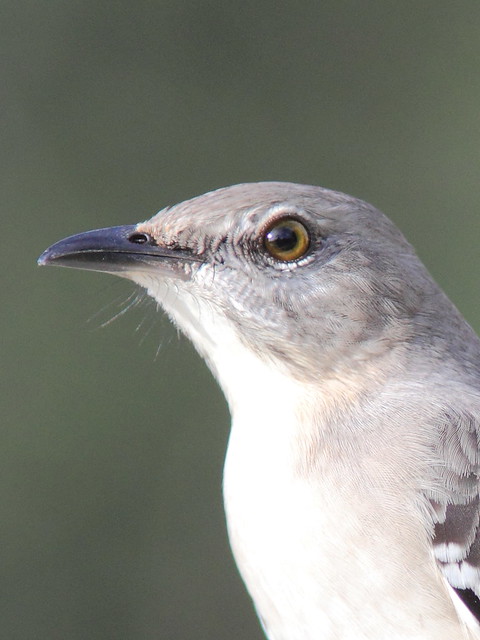
Our back yard actually had quite a bit of action later that afternoon. The White Ibises were out in large numbers. Nearly all are now in full adult plumage.
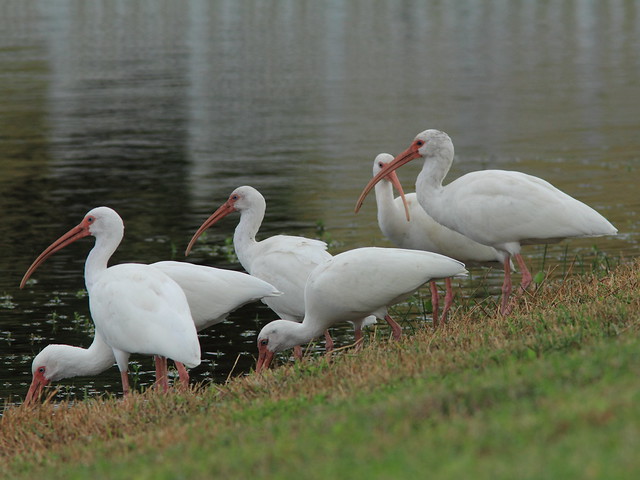
My telephoto lens has such a limited field of view that I had to back up to fit this Great Blue Heron into the photo as it foraged along the margin of our lake.
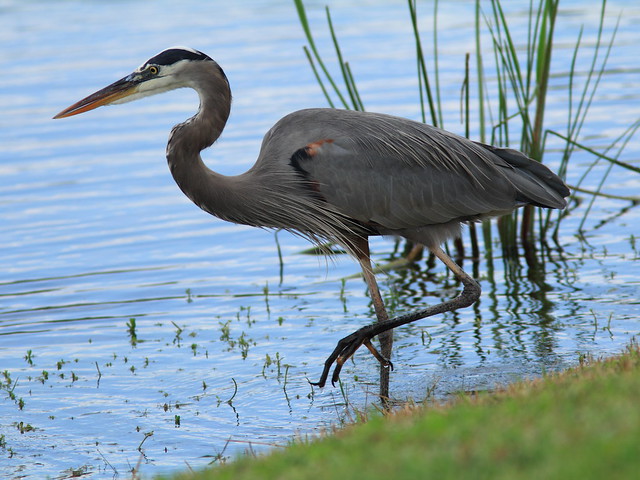
A couple of ibises "spoiled" this image of the heron.
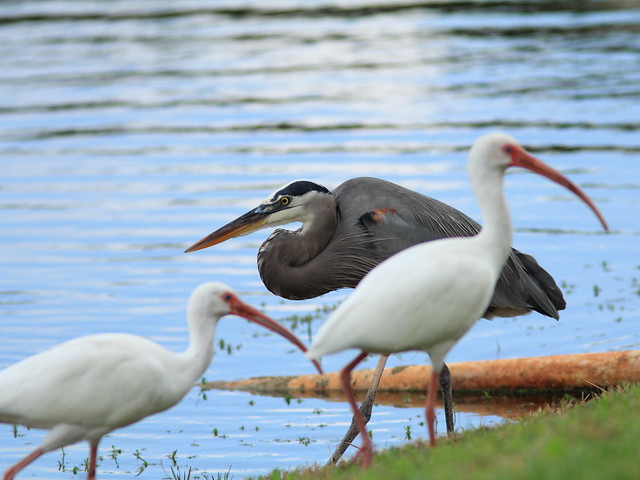
The heron continued to walk towards me, and I had to back up into my next door neighbor's yard for full-frame views.

In the meantime, I tried not to disturb an Anhinga that was drying its wings on my next door neighbor's lawn.
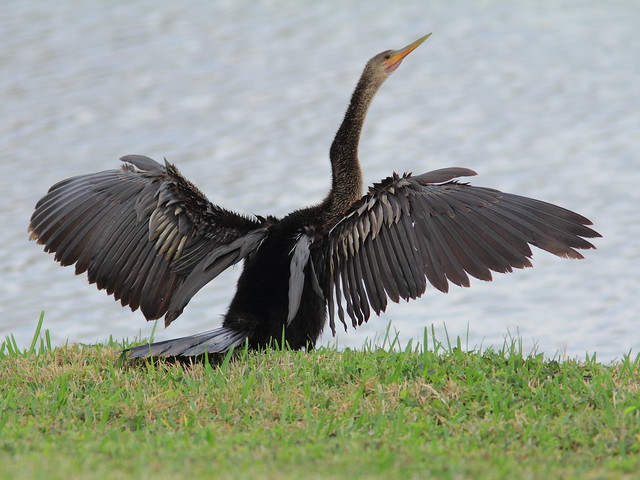
The Anhinga did not take kindly to my approach, and assumed a posture that looked threatening.


